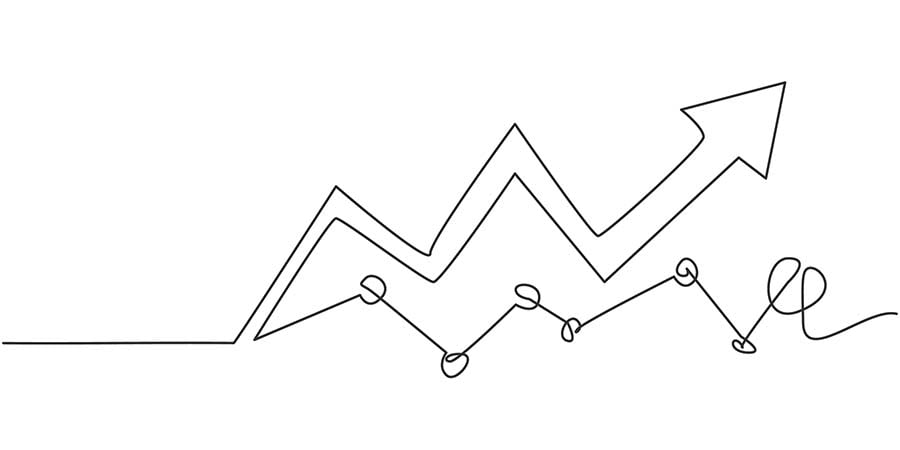The current state of sales is not good, and if we continue down this path, it will only worsen. Key failures are taking place in every aspect of the business, but there are ways to turn things around.
Failing Buyers in the Sales Conversation
When buyers suggest they prefer a salesperson-free buying experience, it’s strong evidence that the salespeople they encounter act in ways that repel them. In the past, buyers complained about aggressive, pushy salespeople trying to force a deal. It has been decades since salespeople were taught and trained in high-pressure tactics, so it’s unlikely that they are overly aggressive.

Modern buyers find little value in the sales conversation, so they don’t want a salesperson’s help. This is evident when a salesperson gets a first meeting with their prospective client, but cannot acquire a second meeting. This proves that prospective clients feel the first meeting was a waste of their time. After suffering through enough sales meetings without gaining anything from the conversation, companies choose to do their research alone. According to one popular statistic, buyers were 57 percent through their decision-making before engaging a salesperson. I don't know for sure, but I expect that number must be increasing.
Some sales organizations are investing in their websites to provide more information online to address buyers’ unwillingness to engage with salespeople. While I can understand wanting to enable the buyer's journey in whatever way they can, having prospective clients rely on your website is like being a doctor who refers your patients to WebMD. Your prospective clients deserve more. They deserve a salesperson with knowledge and experience that goes far beyond what a website can offer. I describe a salesperson with these qualities as being One-Up, meaning they have the ability to create value and be truly consultative. To do this, a salesperson must improve their skills enough to enable a different sales conversation.
Failing to Help Clients Tame Uncertainty
Buyers are increasingly uncertain about making changes that might improve their results. The external environment is one of accelerating, constant, disruptive change, causing decision-makers to wait until things return to normal—something we have been waiting for since September 11, 2001. When a salesperson cannot address the external environment and give their prospective client certainty about their decision, it’s even easier for a client to put off making changes to get the better results they need.

One reason a company seeks consensus is that leaders want all departments to own the decision and the improved outcomes. But another reason is that no one person or division wants to bear the responsibility for a potential failure. If everyone agrees to an initiative, no single person is responsible for a bad outcome. Many so-called opportunities die when there is no consensus. If you are paying attention, you have started to notice leaders making decisions without wide internal agreement.
Remember that it is the salesperson’s job to facilitate the buyer’s journey. In uncertain times, this means helping them navigate through disruption and change to reach a decision.
Failing Our Salespeople
We fail our salespeople by allowing them to sell in a way that doesn't benefit them or their prospective clients. Many salespeople don’t get any real training, and those that do are likely taught a legacy approach that has lost its efficacy. Legacy approaches to sales contribute to buyers’ unhappiness with many salespeople. In organizations where salespeople don’t get real professional development, they are likely to develop their own approaches to the sales conversation. Depending on what the individual’s approach is, it can work in their favor or backfire.
There are few sales floors that still exist. Most salespeople are working from a home office, far from their corporate office and sales manager. As a result, many are missing the development that was much more accessible when salespeople worked in an office.

If you visit a sales floor, it will quickly become clear how much better salespeople are when they are surrounded by other salespeople. From a management perspective this is especially true. Many sales managers need more time to ride along with their salespeople to observe them sell. To know what a salesperson might need to improve, you need to see them in action.
When you look at win rates, it is clear salespeople need help to succeed. Instead or coaching and training to improve sales skills, many organizations look to the magic of technology to solve the problems responsible for this current state of sales. The problem is that technology is not a replacement for true development.
Trading Competency for Sales Technology
As sales tech stacks grow more prominent, a sales force’s effectiveness declines. Instead of building competent and confident salespeople that create value for clients, we give them more technology and tools. A CRM and good, time-saving prospect research are enough for an effective salesperson.

When companies lean heavily on technology, they automate prospecting with a brute-force approach using email and InMail. In the worst cases, they flood the inboxes of non-prospects. Professional scammers and spammers harm the community of salespeople and buyers who would otherwise benefit from LinkedIn. After receiving a deluge of spam, contacts start to ignore every sales message in their inbox, even if it is relevant to them.
Another problem with LinkedIn, is that of loud voices offering sales advice that amounts to gimmicks and hacks. This contributes to the poor state of sales by drowning out those who share the principles of effective sales.
Failing The Frontline Sales Manager
The frontline sales manager role is difficult. Most sales managers get too little training and development and are tasked with serving their organization before taking care of their sales teams. When you ask salespeople what they need from their managers, personal coaching is at the top of the list; it’s something that would improve the salesperson's sales effectiveness. But their managers complain they have no time due to internal tasks and projects.
The metric you might use to measure the salesperson's effectiveness is their win rate. The metric you can use to measure the sales manager is the number of people on their team who hit their targets, something that becomes impossible when the sales manager struggles to make time for their sales force.

A Stakeholder View of the Current State of Sales
When we fail our salespeople, we harm them by allowing them to fail. When we fail a salesperson and they cannot succeed, we also fail their families, depriving them of the resources that would improve their lives.
We also harm our prospective clients by not giving them a salesperson to help them improve their results and business. Finally, when we allow the salesperson to fail to create and win opportunities, we hurt their company.
To reverse these trends, we will need to build better sales managers who can produce better salespeople using an approach that creates value for the contacts through the sales conversation.








.jpg?width=768&height=994&name=salescall-planner-ebook-v3-1-cover%20(1).jpg)


